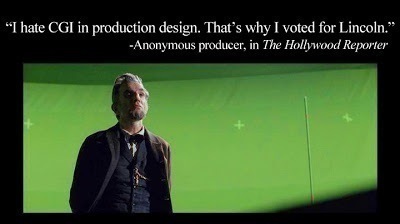
Last year, Comic con and Siggraph happened on successive weekends in Southern California.
ComicCon hit the mainstream consciousness several years ago and now every television show, movie, or comic book aggressively markets itself there, hoping to generate early buzz. Although the argument can still be made that it caters to a subset of the population, the reality is that the content it promotes sits at the cool kids' table now.
While Comic con continues to grow in mainstream popularity, Siggraph will probably never get the same kind of buzz maintain its smaller status because 1) it's a professional conference with a prohibitively high pass price and 2) instead of celebrities charmingly speaking about their roles in the latest action space adventure, Siggraph has awkward PhDs talking in monotone about algorithms.
However, these conferences are complimentary. Comic con is about content. Siggraph is about the technology needed to create that content. Without the technology, the big action movies showing off at Comic con would be like an aviary of featherless peacocks.
But the reverse is also true. All the shiny tech in the world, does not compensate for compelling content.
Here's an anecdote.
We hear about movies that were only made when the technology caught up to the directors' visions, finally enabling certain directors to tell the fantastical stories they've been wanting to tell without compromise.
Two movies that are often cited as examples of this situation are Stanely Kubrick's "AI" and James Cameron's "Avatar". Although the visuals for both were stunning, neither of these films are considered among their creators' best or most influential works. "Avatar" was hugely successful, but it has not impacted the cultural landscape in the same way as Cameron's earlier works; "Terminator" or "Titanic". In fact, Kubrick enthusiasts like to leave "AI" out of his oeuvre, because they find it so inconstant compared to his other films.
It begs the question whether improved technology has actually made content creators lazier because they could dazzle the audience with polished pyrotechnics instead of well crafted stories. Are we are now trapped in the movie version of uninspired advertising campaigns? Instead of iconic campaigns like "Think Different" or "Just do it", we have an endless round of pretty women and puppies lounging around on screen.
Because no matter how sophisticated these algorithms get, they are not a replacement for compelling content. (I'm sure someone is working on this though). Realistic water simulations allow artists to create flood imagery never before seen, and every year there are always papers on how to generate good fluid effects on macro and micro levels. It's very impressive technologically, but just isn't inherently entertaining. Without emotional context, the audience may as well be looking at bath water. Even Roland Emmerich, whose movies seem comprised entirely of particle effects and physics simulations, feels compelled to craft a storyline (albeit tenuous) to justify all the digital destruction.
In recent years, audiences have become spoiled by good VFX everywhere, and now they only notice it when it's bad. While we expect science fiction and fantasy shows to have CG, it is a little more shocking to realize how much it has taken over traditional set building for both television and film.
Ironically, even while much of the industry is driven in a direction where tangible sets and characters become more and more scarce, a majority of the research shown at Siggraph revolves around replicating the human touch.
This was so obvious during the Tech Paper Fast Forward (a rapid preview of current research that will be presented) that I whispered to my friend: "They all want to be us!"
I don't doubt that the algorithms will eventually be good enough that the input from the user will become smaller and smaller to create more and more interesting results. Consider smaller programs such as Instagram (or it's many competitors). None of these programs can do what Photoshop can do, but they don't need to. Ninety-nine percent of the population is able to express itself creatively just fine with pre packaged filters, palettes, and icons.
But we will always want the human touch, and it's not because it's objectively better: it's because we're biased.
Yay human centered bigotry!